Brown Spots on Jade Plant: Causes + Fixes
Jade plants are quite susceptible to all sorts of spots on the foliage and stems. Brown spots are quite common, but they can be fixed with a quick identification and treatment routine. Here, I’ll help you identify the causes of brown spots and how you can fix them for a healthy jade plant.
Watering schedules and water quality appear top of the reasons for your jade plant turning brown. Other causes include high humidity, erratic weather patterns, pests, improper fertilization, and natural aging. You can fix all these problems with correct maintenance practices and occasional treatment.
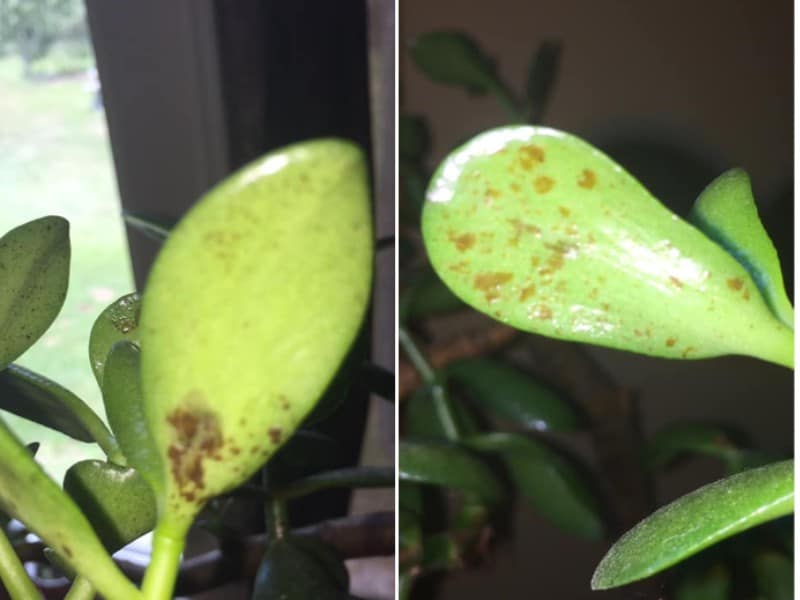
Causes of brown spots on jade plant leaves
A pristine jade plant is a pretty sight but one filled with brown spots, not so much. However, restoring a jade plant’s lush green and succulent thickness needs you to know the cause of the brown spots.
Here are the common reasons for brown spots on jade plants:
Watering problems
Overwatering your jade plant, especially when growing in poorly draining soils, is a major reason for many problems, including leaf discoloration, drooping, and even root rot disease.
The jade plant develops edema when sitting in soggy soils. Edema is characterized by blisters resulting from the roots absorbing water at a higher rate than the transpiration rate. These engorged lesions result in brown or black spots on the leaves.
Poor drainage is also responsible for the color change in jade plant foliage. Pots with poor drainage retain moisture in the soil. The soggy conditions cause the roots to rot, eventually turning the leaves brown and unhealthy.
An underwatered jade plant’s leaves can also develop brown spots that appear dry and desiccated. These may be accompanied by wrinkling and wilting of the jade’s foliage.
Pests and insect Infestation
Pest and insect infestation on the plant, especially in winter, is a major cause of brown spots in jade plants. Mealybugs, spider mites, aphids, and whiteflies suck on the plant’s leaves, changing their appearance.
They feed on the underside of the jade plant, creating a speckled brown appearance. Also, the excretion of insects such as aphids creates a breeding environment for mold, which causes black spots.
Diseases
Fungal diseases on the jade plant are rare because of the succulent nature of the plant’s leaves. However, they can sometimes occur for different reasons, such as high humidity.
Black ring virus is a common condition that causes black spots on the underside of leaves. It is a disease that affects the jade plant and prevents the plant from being used for propagation.
However, the black ring virus is not fatal for jade plants.
Weather changes
Young jade plants are easily affected by extreme temperatures. A sunburned jade plant will develop brown spots on the leaves.
During winter, rapid temperature changes and frosty temperatures can adversely affect the plant. Excess water in the jade plants is exposed to the winter’s cold. Consequently, the jade plant develops brown spots.
High humidity also increases the chances of fungal diseases that cause brown spots. Jade plant leaves transpire less in humid conditions, causing water stress on the plant. Consequently, the leaves develop brown spots.
Natural aging
Natural aging may also cause jade plants to develop brown spots. It may be an indication that your jade plant is dying.
Water quality
Salty water can cause brown spots in jade plants. Roots absorb salty water, which is then lost to transpiration. An accumulation of salts and other remnant minerals causes chemical burns and brown spots on the jade plant leaves.
Fertilization
As a hardy plant, jade hardly needs any fertilizer. You can use a low-nitrogen fertilizer to promote leaf health. Otherwise, the plant will do fine without it. However, overfertilization can cause burns on the jade plant, leaving brown spots.
It also makes the soil toxic and burns the leaves.
How to fix the brown spots
The jade plant can recover from brown spots if you address the problems early. Regular checking of the plant will help you notice any problems before they become a threat. Here are some effective cultural and chemical practices that fix the brown spots.
1. Prune the affected leaves
Prune the affected leaves if the brown spots effect is extensive. Remove the diseased leaves to prevent the spread of any infection. New leaves will grow to replace the old ones.
2. Water the plant when the soil dries out
Revise the watering schedule. Only water sparingly. Reduce watering during winter. Water the plant when the soil is marginally dry. The top two inches of the topsoil should be dry before you water your jade plant.
3. Change the potting mix
You should also replace slow-draining soils like clay soils with porous soils like sand that don’t retain much moisture.
4. Move the plant to a breezy spot
Place the plant in a spot with a breeze to avoid high humidity areas in the home, such as the bathroom. Alternatively, use a plant dehumidifier indoors if you live in humid conditions.
5. Kill pests with isopropyl alcohol
Since insecticides are not very efficient on jade plants, try using horticultural soaps and homemade solutions.
Alternatively, you can dab isopropyl alcoholic solution on the infected spots to get rid of pests and scale. Test the solution on a small section of the plant to ensure they are not damaging to the plant.
I’d also recommend you wipe the plant to clear white surface salt, mineral buildup, and pest sap to discourage pests.
JADE PLANT: BEST TIPS + TRICKS
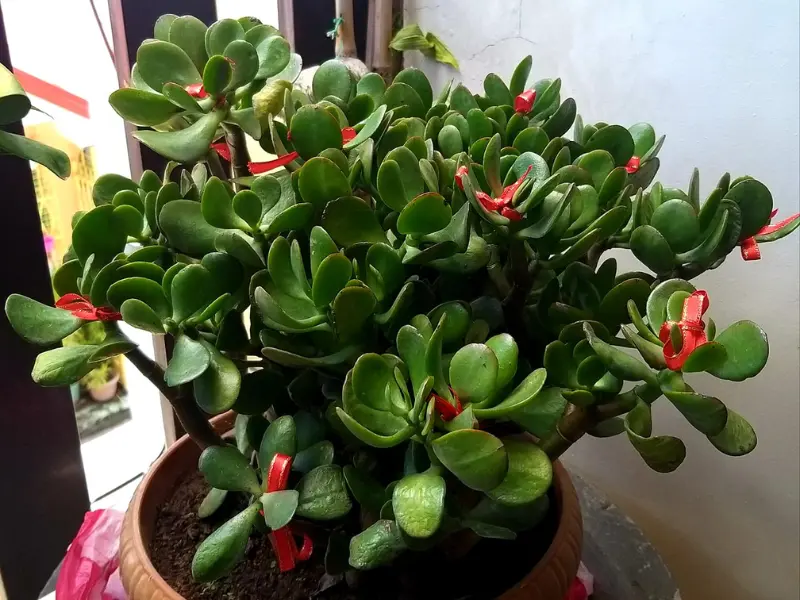
I’ve put together tips and tricks for healthier, happier jade plants that I’ve learned over the years in a single guide for you.




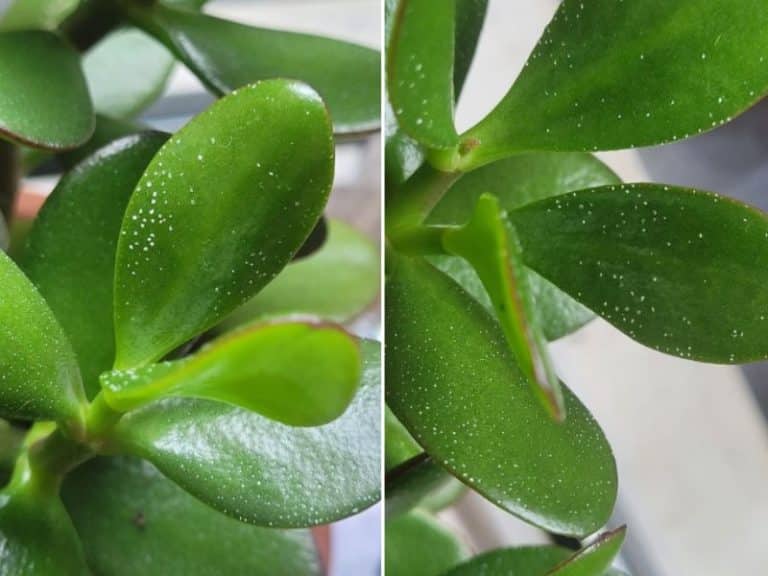
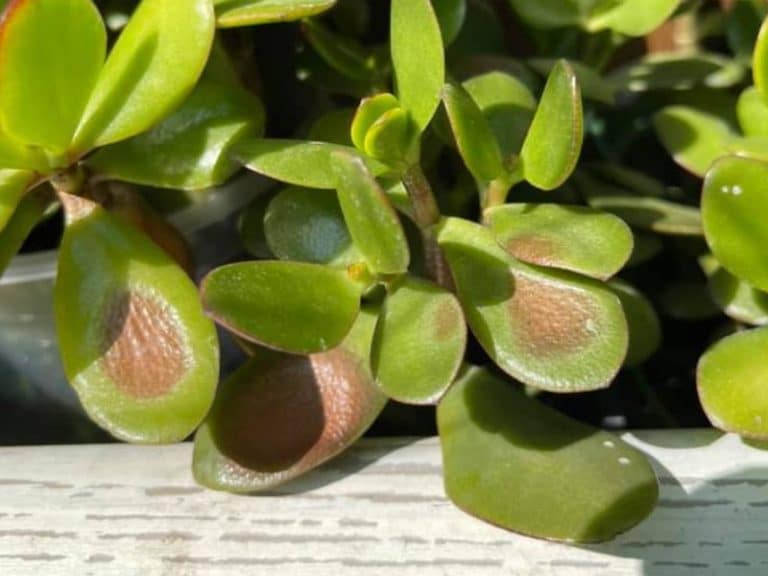
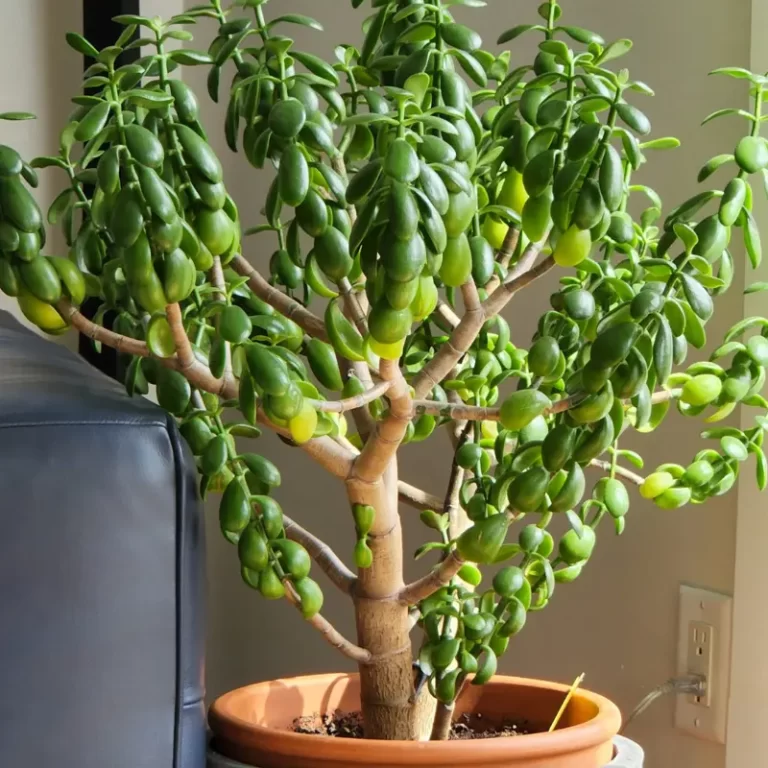
Hi there, I inherited a small jade plant from my gran, so it holds tremendous sentimental value, but it seems to be really unhappy!
It arrived Really** pot bound – the soil had forms a solid plug with moss growing on it! So I removed this and repotted into a terracotta pot with cacti/succulent soil. And at first it seems to like this – new growth happened etc, but then the plant started getting brown callous patches on some of the leaves, and has started dropping like 40% of its leaves and some bits of stem! This plant means so much I’d really appreciate any help in saving it! Thanks!